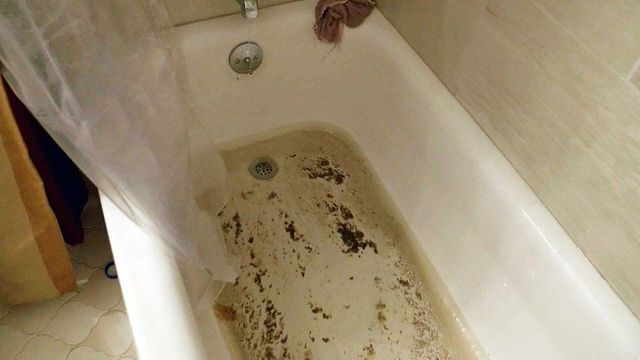Just how do you feel in relation to What To Do If Sewage Starts Backing Up Into the Shower?

Sewage backup in the bathtub can be a distressing and unhygienic issue for any type of property owner. Not only is it bothersome, yet it additionally poses severe wellness dangers and indicates underlying issues with the plumbing system. Understanding why sewer is turning up with the bathtub is critical for taking appropriate activity to deal with the problem successfully.
Intro to the Issue
Usual Reasons for Sewer Backup
Obstructions in the Drain Line
Among one of the most common sources of sewage backup is a blockage in the drain line. This can take place due to the buildup of debris, grease, or international objects in the pipes, protecting against appropriate flow and triggering sewage to support right into your bathtub.
Tree Origin Breach
Tree origins seeking wetness and nutrients can penetrate sewer lines with little fractures or joints. Over time, these origins can expand and increase, creating considerable damages to the pipelines and leading to sewage back-up concerns.
Understanding the Trouble
When sewer draws back up right into the bath tub, it's a clear sign of a trouble with the drain system. The wastewater that should be moving away from your home is instead finding its back into your home, which can cause significant damages and health hazards.
Prospective Causes
Numerous aspects can add to sewer back-up in the tub. From blockages in the drain line to concerns with the plumbing infrastructure, determining the source is necessary for finding an option.
Aging Infrastructure
Older homes might have outdated plumbing systems that are a lot more vulnerable to rust, splits, and wear and tear. As pipelines age, they come to be much more vulnerable to leaks and obstructions, boosting the likelihood of sewage backup cases.
Heavy Rainfall or Flooding
During periods of heavy rainfall or flooding, the sewer system might end up being overwhelmed with excess water, causing backups and overflows. This can lead to sewage backing up into bath tubs and various other components inside the home.
Indicators of Sewer Back-up
Foul Odors
Unpleasant smells rising from drains or fixtures, specifically in the restroom, might suggest sewage backup concerns. These odors are usually solid and persistent, signaling a problem that calls for immediate interest.
Slow Draining Fixtures
Tubs, sinks, and commodes that drain pipes gradually or not at all could be experiencing sewage backup. If multiple components are influenced all at once, it's most likely that the issue stems from a common point, such as the major sewage system line.
Gurgling Sounds
Unusual gurgling or gurgling sounds originating from drains when water is running somewhere else in your house are a measure of air entraped in the plumbing system. This air buildup can result from sewer backup and must be explored quickly.
Wellness Risks Associated with Sewer Backup
Contamination of Water
Sewage back-up can contaminate the supply of water in your house, presenting a significant health and wellness risk to you and your household. Direct exposure to contaminated water can bring about stomach issues, skin infections, and various other diseases.
Mold Growth
Wetness from sewage backup can create excellent problems for mold growth in your home. Mold and mildew spores can worsen breathing troubles and trigger allergic reactions in delicate people, making prompt cleaning important.
Spread of Disease
Sewer includes damaging microorganisms, viruses, and parasites that can create a series of conditions, including liver disease, cholera, and gastroenteritis. Entering contact with sewage or polluted surface areas places you at risk of infection.
Tidying up After Sewage Back-up
Sanitation Procedures
Completely disinfect and disinfect influenced locations after sewer back-up to eliminate hazardous microorganisms and stop mold development. Use ideal cleaning products and safety equipment to make certain secure and effective cleaning.
Repair of Influenced Areas
Fix any type of damage to floor covering, wall surfaces, check here or components brought on by sewage backup. Relying on the degree of the damages, you may need to change carpeting, drywall, or other products to restore your home to its pre-loss condition.
Immediate Actions to Take
Switching Off Water Supply
In case of sewage backup, it's important to shut off the water system to avoid more contamination and damage. Situate the main water shutoff valve in your home and shut it off up until the problem can be settled.
Speaking To an Expert Plumber
Dealing with sewage back-up is not a DIY job. Contact a qualified plumber with experience in managing sewage-related issues to assess the circumstance and execute required repair work or cleanups.
Preventing Contact with Contaminated Water
Up until the sewage check here backup is dealt with, stay clear of contact with polluted water to stop the spread of microorganisms and microorganisms. Use safety gear if you need to remain in the affected location and wash your hands thoroughly afterward.
Preventive Measures
Normal Upkeep of Sewage System Lines
Arrange routine inspections and maintenance of your sewer lines to determine and resolve prospective more info concerns prior to they intensify right into significant troubles. This can consist of clearing out debris, checking for tree origin intrusion, and fixing any kind of damaged pipes.
Installing Bayou Valves
Think about setting up bayou valves in your plumbing system to avoid sewer from flowing back right into your home during periods of heavy rainfall or flooding. These shutoffs instantly close when water starts backing up, protecting your home from contamination.
Correct Disposal of Household Waste
Prevent purging anything aside from toilet tissue and human waste down the commode to avoid blockages and blockages in the sewage system line. Dispose of oil, oil, and other family chemicals effectively to decrease the danger of plumbing troubles.
Why Is Water Backing Up in My Bathtub When I Flush My Toilet?
What to do about a sewer line clog
First, don’t bother with plunging. No amount of plunging will dislodge the clog in a sewer line. The clog is too far away. Plungers are for clogs in the toilet itself, not the sewer line. Plus, the most likely causes of a sewer clog are:
Tree roots Flushed toys or feminine products Grease buildup Those items don’t move easily. And in the case of tree roots, the roots need to be cut out of the pipe and the pipe will need to be repaired.
You’ll need a closet auger. A closet auger is a type of plumber’s snake with a protective cover to keep from scratching the delicate porcelain toilet. If the clog is further down, you may need to remove the toilet or use one of your cleanouts to get to the clog.
We also recommend doing a video inspection of the drain to ensure that the cause of the clog has been completely removed. Otherwise, you could have the same problem again in a few days or weeks.
https://mspplumbingheatingair.com/blog/why-is-water-backing-up-in-my-bathtub-when-i-flush-my-toilet

I have been very curious about What to Do if Sewage Starts Coming Up Through Your Bathtub and I am hoping you appreciated the entire blog posting. Sharing is good. Who knows, you could be doing someone a favor. Thanks so much for going through it.
Get Started